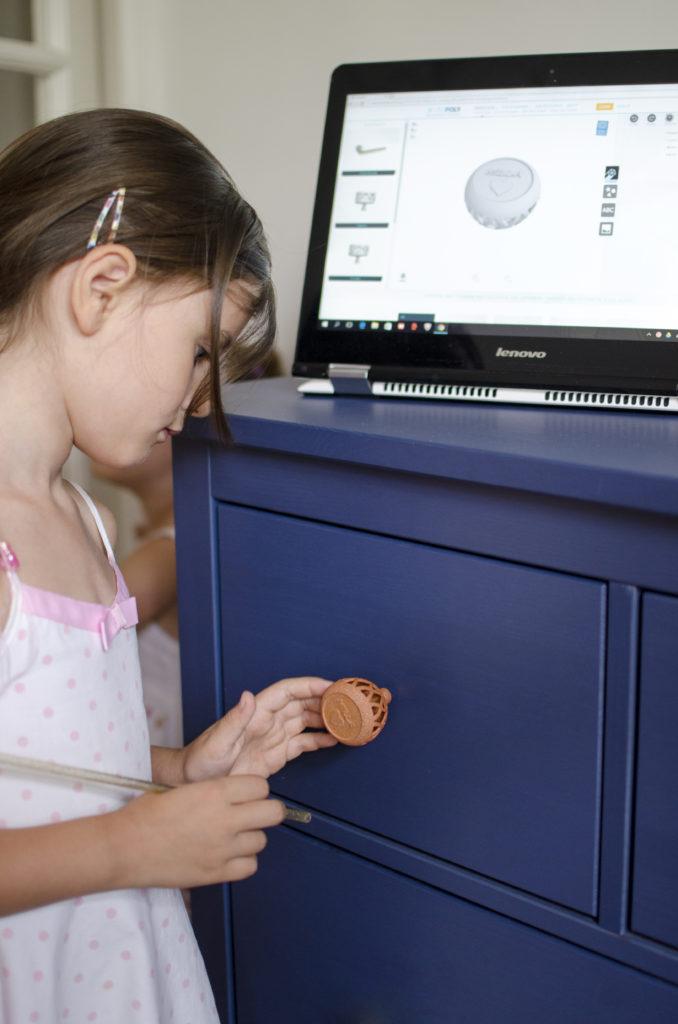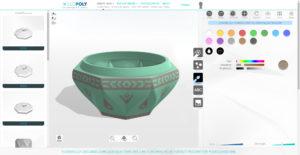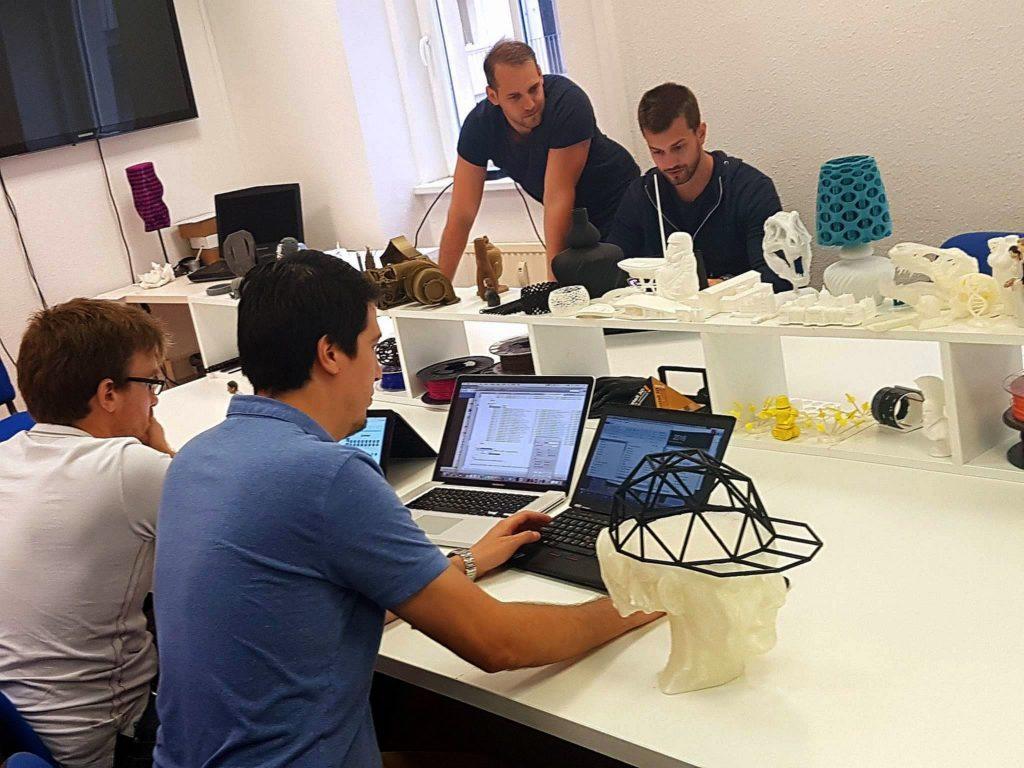 One of the aspects of 3D technologies that often appeals to new adopters is its ease of customization; 3D design templates allow for incredible freedom in creating one-off or low-volume customized products, made to represent exactly the image a consumer or company wishes to present. This factor has paved the way in uses both practical and purely aesthetic, allowing for products with designs made to fit exact occasions, perhaps emblazoned with the name of a birthday child or a logo for a company offering promotional wares at a tradeshow. The applications are truly limitless, and some of the smartest participants in the industry are embracing the customization that 3D design software can offer to their customers. Among these is an operation we’ve been keeping an eye on, which has roots in custom design and is branching out to great effect.
One of the aspects of 3D technologies that often appeals to new adopters is its ease of customization; 3D design templates allow for incredible freedom in creating one-off or low-volume customized products, made to represent exactly the image a consumer or company wishes to present. This factor has paved the way in uses both practical and purely aesthetic, allowing for products with designs made to fit exact occasions, perhaps emblazoned with the name of a birthday child or a logo for a company offering promotional wares at a tradeshow. The applications are truly limitless, and some of the smartest participants in the industry are embracing the customization that 3D design software can offer to their customers. Among these is an operation we’ve been keeping an eye on, which has roots in custom design and is branching out to great effect.
We’ve been following Budapest- and San Francisco-based Leopoly since it was first spun off from Leonar3do almost two years ago — and this exciting company has come a long way since its beginnings. Earlier this month, we had the opportunity to talk a bit with the Leopoly team and learn more about their recently completed investment round and how it has helped the company along its growth trajectory.
Intrigued to learn more about the vision behind this enterprise, I had A Few Questions For the company. From partnerships with major companies to a globally based team, there’s a lot going on at Leopoly — and CEO Roland Mányai was kind enough to fill us in so our readers could learn more.
Can you fill us in on your background and how it led you to Leopoly?
I first met 3D technologies in 2011 and it immediately captured me. Coming from the tourism industry and also having a start up making city exploration more fun and experience based using new technologies, I felt the passion to find out how to use technology in our everyday life to have object fitting our personal needs.
I also co-founded one of the most successful TEDx event series in Europe, TEDxDanubia and helped Singularity University Global Impact competition in the Eastern European region. I met and talked technology experts and business people during these happenings from the 3D and VR communities and very soon I joined 3D – VR hardware and software platform company Leonar3Do.
What was the original vision behind Leopoly?
I quickly learned that 3D technology is one of the fastest growing tech sectors, but only reaches consumers on small scale. As I am not a professional designer or a 3D expert, so how could I take advantage of it? Then, I realized, that there is a missing piece, a simple and accessible platform for people to easily create and enjoy their 3D products. So I quit Leonar3Do with Zoltan, my co-founder partner, and established Leopoly as a spin off to focus on the software solution.
We wanted to provide a tool that can be easily handled even by kids without any learning curve. Unlike any other existing CAD software we wanted to provide an easy to use software and interface running on many platforms. Let it be a kid’s toy, home accessories or medical implants, personalization makes a difference.
When did you personally first become interested in 3D design/3D printing? How did the design of a knob for your daughter’s cabinet help lay the foundation for this company?
Having two kids and a lot of late night work at home, I was inspired by my own environment. The door knob was the first and easy to create step that demonstrated that there are things where customization make sense. Even such small everyday items. But this is only the beginning, I was always envisioning items used in homes, medical, and other fields, small and big, plastic, metal and many more materials for different purposes.

“One night I decided to create a cabinet knob in my daughter’s room. I selected the shape, color, even the material, and I put my personal message engraved in it, all completed in seconds. Magic!” says Mányai.
With roots in both Budapest and San Francisco, the Leopoly team certainly offers global perspective to operations; how do you feel this helps operations?
Having two offices we can work with clients in both Europe and US. While most of our clients are from the US, we decided to keep the development team in Hungary. We have extremely talented engineers in Budapest and we can work and accomplish 3 or 4 times more than a company with the same budget in Silicon Valley and this is a huge added value.
How did Leopoly’s experience with the River Accelerator help to develop the company?
We accomplished to start working with small companies and big ones alike in 2015, including Fortune 100 enterprises. Our next big challenge and step is to scale up and introduce our VR product line. River program helped us to get connected to technology partners and business models how to scale, and also connected us to many VR companies, helping us fine tune our business model and perfect our product lines. We plan to involve another round of investment in 2017 and we also found investors who would like to join and ride the big new technology waves with us.
 Customization seems to be a key to Leopoly’s success; how has this focus served to create customer interest?
Customization seems to be a key to Leopoly’s success; how has this focus served to create customer interest?
According to researches, 75% of people are willing to pay more, even 3 times, for a custom product. It is not by accident that so many companies offer personalization, 3D technologies simply make this easier, quicker, cheaper in the medium term. We offer a software and interface for this easy creation or just customization. So we received positive feedback and early results in 2015. We ended up working with Bosch, Lowe’s innovation team and HP among many others, who are more involved in the 3D ecosystem.
What aspects of the company’s business plan have you found to be most exciting? Most challenging?
3D technologies, including printing, scanning, VR and AR, are still in a very early stages. This is a Blue Ocean, all of us working in this field have to figure out new ways, let it be a product UI, business model, co-operation and innovation in technology. This is really exciting, and what inspires me the most is the link between these new exponential technologies. When you can connect scanning, software and printing and also AR or VR, we can have benefits exponential benefits in so many areas. I would like to introduce co-creation tools, where more people at the same time in different parts of the world create the same virtual object in a browser or VR and AR platforms, then simply send them to each other and will be printed and then scanned, and changed and used – so creativity and creation can become social and everyday and useful. When digital meets physical for real.
Most certainly it will take years until we all can fully utilize these technologies, perhaps a decade. Yet it wasn’t any shorter with internet and many other game changing technologies. This change starts with the maker communities’ creative minds and rapid prototyping, while consumers first meet easily printable accessories, and jewelry, minime, and other easy to handle print items. This is fun, and already open up new markets. Yet when new materials, printing technologies enter the market in the future, furniture, fashion, footwear, interior design, health care (implants and dental, etc), and even housing and other industries will join this new wave. And they all need software that are easy to use and have intelligent algorithms.
Can you share with us anything to expect in the near future from Leopoly?
We are going to launch our VR product in a few weeks, while we are continuously improving our toolsets. In our virtual reality environment users will have a chance to create in real sizes, making 3D objects in 3D. It is an extremely exciting user experience, believe me! We will also introduce a solution for customization in the fashion and medical industries by adding some intelligence to our 3D design software application.
What else should we know about Leopoly?
I think that 3D technologies can make our lives better especially by its potentials to create personalized products – items that are fitting our needs. Better quality, more fun, better looking and most importantly with better functionality. On top if it, we can save our environment with better distribution and less standardized mass products.
We started with an easy consumer-focused and browser-based 3D creation app in 2014 with a special easy sculpting tool and many people in the industry still associates Leopoly with this.
Yet since then we added a new dimension to this and working with business partners. We partner up with companies who are looking for new ways to utilize 3D scanning, printing and VR and figure out how to make better products in retail and health care.
As Mányai told me, building on the partnerships Leopoly has been building over the last year-plus, “Our first such partnership was with Lowe’s in 2015 running a pilot project with Orchard in California,” and that the company then “partnered with Bosch, and HP and over a dozen other companies.” With partners from Lowe’s to HP taking interest in Leopoly’s offerings, those searching at the consumer level for custom offerings can clearly benefit from a company that is seeking to bring the best in technology right to their fingertips.
With a real focus on the customer, Leopoly is certainly striving to use the customization capabilities inherent in 3D design and 3D printing to their utmost. And this focus certainly seems to be working for them, especially as they begin to branch out to embrace virtual reality next. We’ll be keeping an eye on Leopoly — and we’re expecting some very bright things from this company in the future. Discuss further in the Leopoly & 3D Printing Offerings forum over at 3DPB.com.
Subscribe to Our Email Newsletter
Stay up-to-date on all the latest news from the 3D printing industry and receive information and offers from third party vendors.
You May Also Like
Profiling a Construction 3D Printing Pioneer: US Army Corps of Engineers’ Megan Kreiger
The world of construction 3D printing is still so new that the true experts can probably be counted on two hands. Among them is Megan Kreiger, Portfolio Manager of Additive...
US Army Corps of Engineers Taps Lincoln Electric & Eaton for Largest 3D Printed US Civil Works Part
The Soo Locks sit on the US-Canadian border, enabling maritime travel between Lake Superior and Lake Huron, from which ships can reach the rest of the Great Lakes. Crafts carrying...
Construction 3D Printing CEO Reflects on Being Female in Construction
Natalie Wadley, CEO of ChangeMaker3D, could hear the words of her daughter sitting next to her resounding in her head. “Mum, MUM, you’ve won!” Wadley had just won the prestigious...
1Print to Commercialize 3D Printed Coastal Resilience Solutions
1Print, a company that specializes in deploying additive construction (AC) for infrastructure projects, has entered an agreement with the University of Miami (UM) to accelerate commercialization of the SEAHIVE shoreline...































